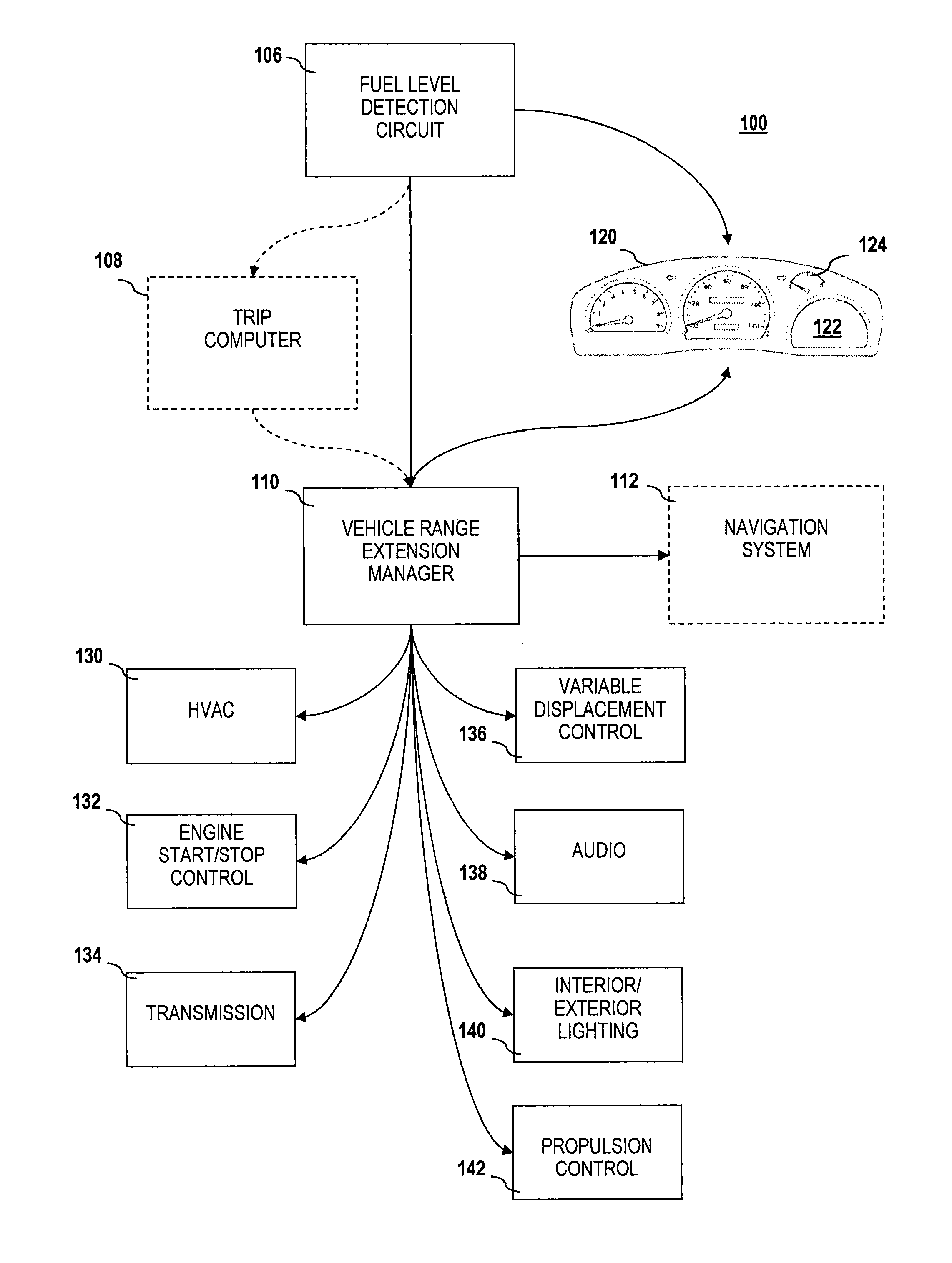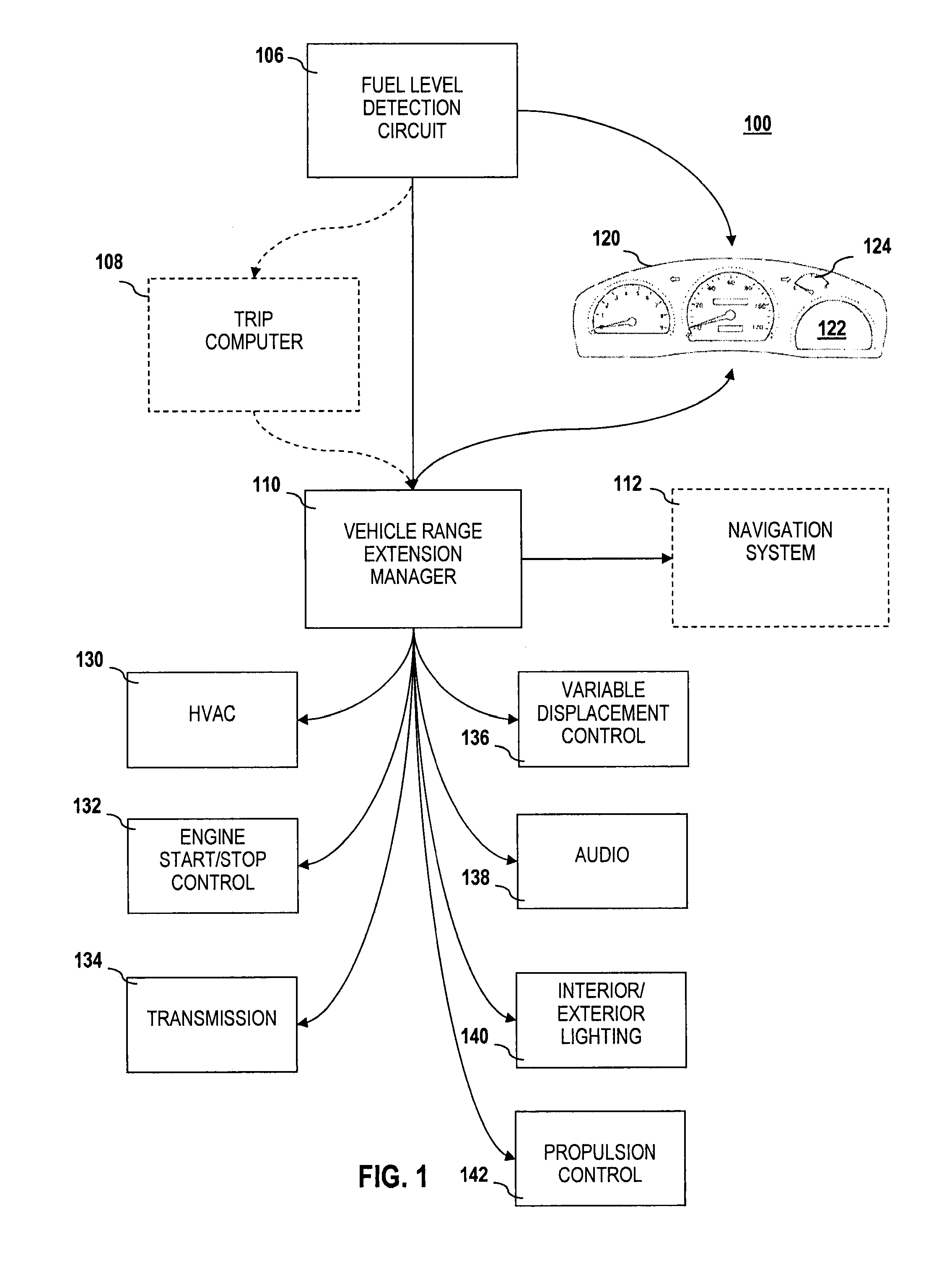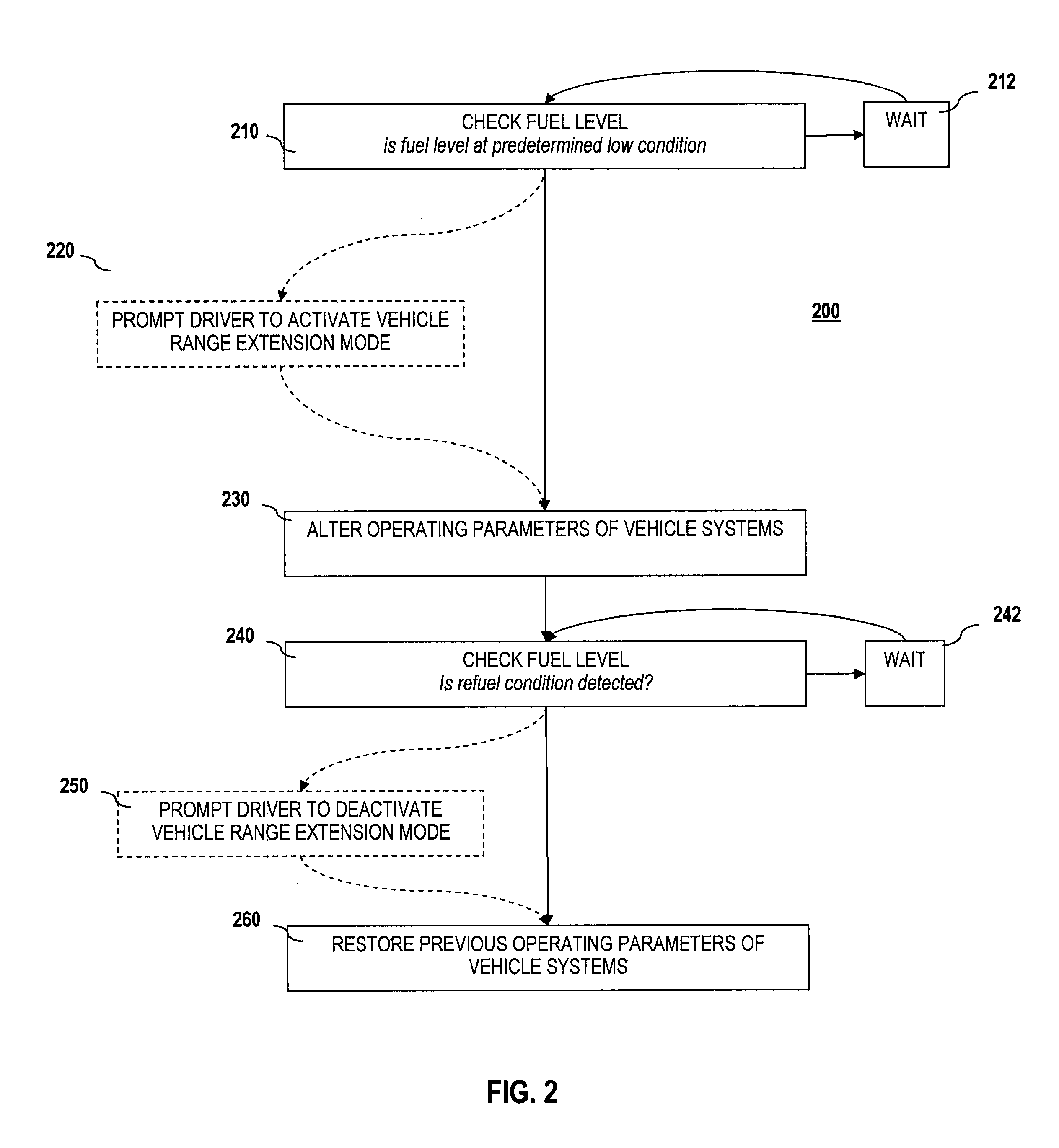System and method for vehicle range extension on detection of a low fuel condition
a low fuel condition and vehicle range technology, applied in the direction of machines/engines, electric control, instruments, etc., can solve the problems of inability to provide information to the driver about what can be done to increase the remaining range, and existing systems are incapable of improving the remaining range, so as to increase the remaining driving range of the vehicle, improve the efficiency of the propulsion system, and reduce the effect of fuel consumption
- Summary
- Abstract
- Description
- Claims
- Application Information
AI Technical Summary
Benefits of technology
Problems solved by technology
Method used
Image
Examples
Embodiment Construction
[0016]Before describing the disclosed embodiments of the technology in detail, it is to be understood that the technology is not limited in its application to the details of the particular arrangement shown here since the technology is capable of other embodiments. Also, the terminology used herein is for the purpose of description and not of limitation.
[0017]FIG. 1 shows a vehicle range extension system 100 comprising a vehicle range extension manager 110 that monitors an output from a fuel level detection circuit 106. When a predetermined fuel condition is detected, the vehicle range extension manager 110 is capable of altering the operating parameters of certain vehicle systems 130-140 so as to decrease the fuel consumption rate of the vehicle. Example vehicle systems that may have their operating parameters altered (it is understood that systems may be activated and deactivated completely in addition to having their settings changed) include an HVAC system 130, an engine start / s...
PUM
 Login to View More
Login to View More Abstract
Description
Claims
Application Information
 Login to View More
Login to View More - R&D
- Intellectual Property
- Life Sciences
- Materials
- Tech Scout
- Unparalleled Data Quality
- Higher Quality Content
- 60% Fewer Hallucinations
Browse by: Latest US Patents, China's latest patents, Technical Efficacy Thesaurus, Application Domain, Technology Topic, Popular Technical Reports.
© 2025 PatSnap. All rights reserved.Legal|Privacy policy|Modern Slavery Act Transparency Statement|Sitemap|About US| Contact US: help@patsnap.com



